ADT 2010 Annual Report Download - page 64
Download and view the complete annual report
Please find page 64 of the 2010 ADT annual report below. You can navigate through the pages in the report by either clicking on the pages listed below, or by using the keyword search tool below to find specific information within the annual report.-
 1
1 -
 2
2 -
 3
3 -
 4
4 -
 5
5 -
 6
6 -
 7
7 -
 8
8 -
 9
9 -
 10
10 -
 11
11 -
 12
12 -
 13
13 -
 14
14 -
 15
15 -
 16
16 -
 17
17 -
 18
18 -
 19
19 -
 20
20 -
 21
21 -
 22
22 -
 23
23 -
 24
24 -
 25
25 -
 26
26 -
 27
27 -
 28
28 -
 29
29 -
 30
30 -
 31
31 -
 32
32 -
 33
33 -
 34
34 -
 35
35 -
 36
36 -
 37
37 -
 38
38 -
 39
39 -
 40
40 -
 41
41 -
 42
42 -
 43
43 -
 44
44 -
 45
45 -
 46
46 -
 47
47 -
 48
48 -
 49
49 -
 50
50 -
 51
51 -
 52
52 -
 53
53 -
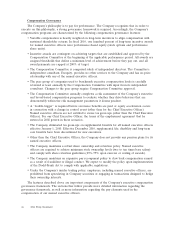 54
54 -
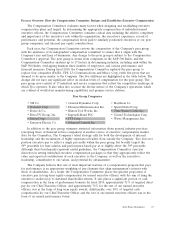 55
55 -
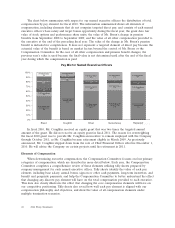 56
56 -
 57
57 -
 58
58 -
 59
59 -
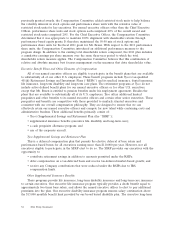 60
60 -
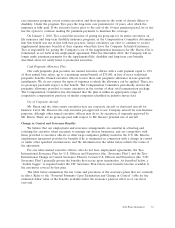 61
61 -
 62
62 -
 63
63 -
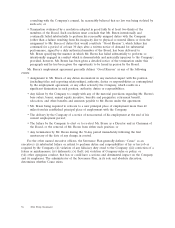 64
64 -
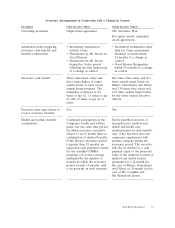 65
65 -
 66
66 -
 67
67 -
 68
68 -
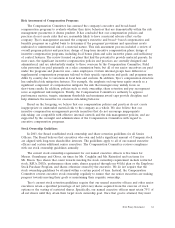 69
69 -
 70
70 -
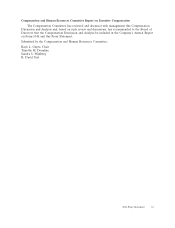 71
71 -
 72
72 -
 73
73 -
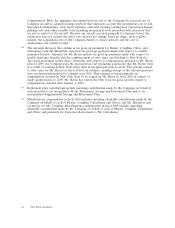 74
74 -
 75
75 -
 76
76 -
 77
77 -
 78
78 -
 79
79 -
 80
80 -
 81
81 -
 82
82 -
 83
83 -
 84
84 -
 85
85 -
 86
86 -
 87
87 -
 88
88 -
 89
89 -
 90
90 -
 91
91 -
 92
92 -
 93
93 -
 94
94 -
 95
95 -
 96
96 -
 97
97 -
 98
98 -
 99
99 -
 100
100 -
 101
101 -
 102
102 -
 103
103 -
 104
104 -
 105
105 -
 106
106 -
 107
107 -
 108
108 -
 109
109 -
 110
110 -
 111
111 -
 112
112 -
 113
113 -
 114
114 -
 115
115 -
 116
116 -
 117
117 -
 118
118 -
 119
119 -
 120
120 -
 121
121 -
 122
122 -
 123
123 -
 124
124 -
 125
125 -
 126
126 -
 127
127 -
 128
128 -
 129
129 -
 130
130 -
 131
131 -
 132
132 -
 133
133 -
 134
134 -
 135
135 -
 136
136 -
 137
137 -
 138
138 -
 139
139 -
 140
140 -
 141
141 -
 142
142 -
 143
143 -
 144
144 -
 145
145 -
 146
146 -
 147
147 -
 148
148 -
 149
149 -
 150
150 -
 151
151 -
 152
152 -
 153
153 -
 154
154 -
 155
155 -
 156
156 -
 157
157 -
 158
158 -
 159
159 -
 160
160 -
 161
161 -
 162
162 -
 163
163 -
 164
164 -
 165
165 -
 166
166 -
 167
167 -
 168
168 -
 169
169 -
 170
170 -
 171
171 -
 172
172 -
 173
173 -
 174
174 -
 175
175 -
 176
176 -
 177
177 -
 178
178 -
 179
179 -
 180
180 -
 181
181 -
 182
182 -
 183
183 -
 184
184 -
 185
185 -
 186
186 -
 187
187 -
 188
188 -
 189
189 -
 190
190 -
 191
191 -
 192
192 -
 193
193 -
 194
194 -
 195
195 -
 196
196 -
 197
197 -
 198
198 -
 199
199 -
 200
200 -
 201
201 -
 202
202 -
 203
203 -
 204
204 -
 205
205 -
 206
206 -
 207
207 -
 208
208 -
 209
209 -
 210
210 -
 211
211 -
 212
212 -
 213
213 -
 214
214 -
 215
215 -
 216
216 -
 217
217 -
 218
218 -
 219
219 -
 220
220 -
 221
221 -
 222
222 -
 223
223 -
 224
224 -
 225
225 -
 226
226 -
 227
227 -
 228
228 -
 229
229 -
 230
230 -
 231
231 -
 232
232 -
 233
233 -
 234
234 -
 235
235 -
 236
236 -
 237
237 -
 238
238 -
 239
239 -
 240
240 -
 241
241 -
 242
242 -
 243
243 -
 244
244 -
 245
245 -
 246
246 -
 247
247 -
 248
248 -
 249
249 -
 250
250 -
 251
251 -
 252
252 -
 253
253 -
 254
254 -
 255
255 -
 256
256 -
 257
257 -
 258
258 -
 259
259 -
 260
260 -
 261
261 -
 262
262 -
 263
263 -
 264
264 -
 265
265 -
 266
266 -
 267
267 -
 268
268 -
 269
269 -
 270
270 -
 271
271 -
 272
272 -
 273
273 -
 274
274 -
 275
275 -
 276
276 -
 277
277 -
 278
278 -
 279
279 -
 280
280 -
 281
281 -
 282
282 -
 283
283 -
 284
284 -
 285
285 -
 286
286 -
 287
287 -
 288
288 -
 289
289 -
 290
290 -
 291
291 -
 292
292
 |
 |
consulting with the Company’s counsel, he reasonably believed that no law was being violated by
such acts; or
• Termination evidenced by a resolution adopted in good faith by at least two-thirds of the
members of the Board. Such resolution must conclude that Mr. Breen intentionally and
continually failed substantially to perform his reasonably assigned duties with the Company
(other than a failure resulting from his incapacity due to physical or mental illness or from the
assignment to Mr. Breen of duties that would constitute ‘‘Good Reason’’), which failure has
continued for a period of at least 30 days after a written notice of demand for substantial
performance, signed by a duly authorized member of the Board, has been delivered to
Mr. Breen specifying the manner in which Mr. Breen has failed substantially to perform; or
intentionally engaged in conduct which is demonstrably and materially injurious to the Company;
provided, however, Mr. Breen has been given a detailed notice of the termination under this
paragraph and he has been given the opportunity to be heard in person by the Board.
Mr. Breen’s employment agreement generally defines ‘‘Good Reason’’ as any of the following
events:
• Assignment to Mr. Breen of any duties inconsistent in any material respect with his position
(including titles and reporting relationships), authority, duties or responsibilities as contemplated
by the employment agreement, or any other action by the Company, which results in a
significant diminution in such position, authority, duties or responsibilities;
• Any failure by the Company to comply with any of the material provisions regarding Mr. Breen’s
base salary, bonus, annual equity incentive, benefits and perquisites, retirement benefit,
relocation, and other benefits and amounts payable to Mr. Breen under the agreement;
• Mr. Breen being required to relocate to a new principal place of employment more than 60
miles from his established principal place of employment with the Company;
• The delivery by the Company of a notice of non-renewal of his employment at the end of his
current employment period;
• The failure by the Company to elect or to re-elect Mr. Breen as a Director and as Chairman of
the Board, or the removal of Mr. Breen from either such position; or
• Any termination by Mr. Breen during the 30-day period immediately following the first
anniversary of the date of any change in control.
For the other named executive officers, the Severance Plan generally defines ‘‘Cause’’ as an
executive’s (i) substantial failure or refusal to perform duties and responsibilities of his or her job as
required by the Company; (ii) violation of any fiduciary duty owed to the Company; (iii) conviction of a
felony or misdemeanor; (iv) dishonesty; (v) theft; (vi) violation of Company rules or policy; or
(vii) other egregious conduct, that has or could have a serious and detrimental impact on the Company
and its employees. The administrator of the Severance Plan, in its sole and absolute discretion,
determines whether Cause exists.
56 2011 Proxy Statement
